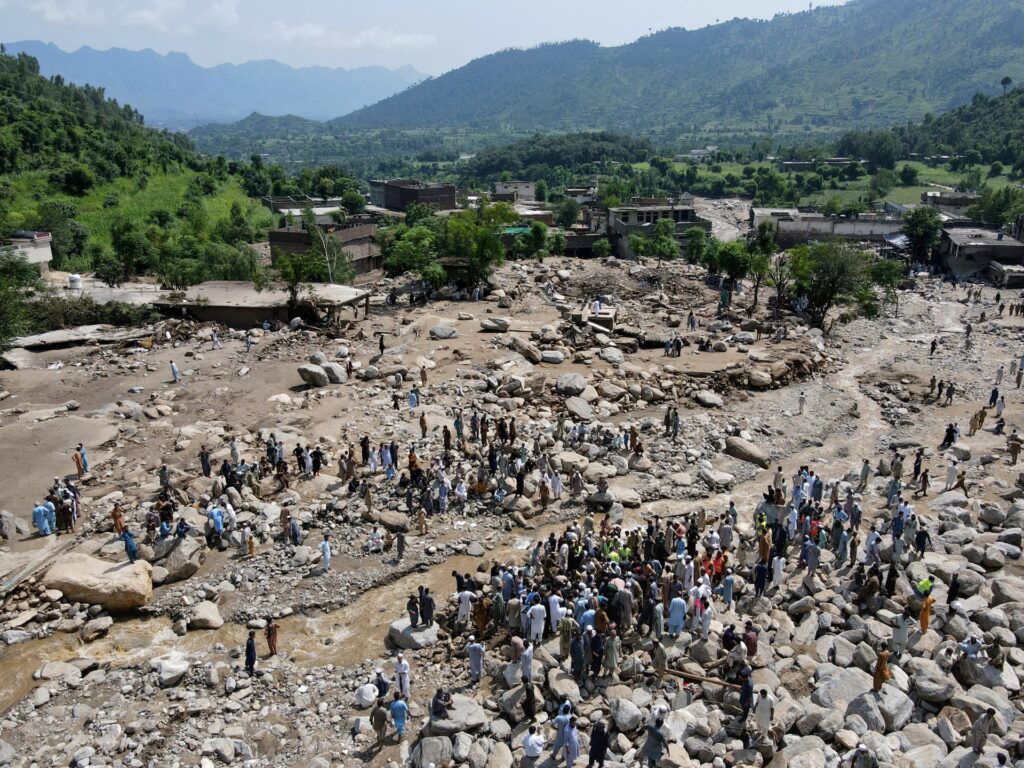In northern Pakistan, over 100 people are missing after flash floods claimed at least 360 lives nationwide, particularly in Khyber Pakhtunkhwa province. The floods, exacerbated by a rare phenomenon known as a “cloudburst,” inundated areas, leading to landslides that devastated entire villages.
Approximately 207 deaths occurred in Bunar district as relentless rains and landslides caused homes to collapse. Local conditions, including erosion-prone soil and deforestation, heightened vulnerability to such disasters. The region received over 150mm of rain within an hour, with residents describing the storm’s intensity and accompanying lightning as apocalyptic.
The current monsoon season, significantly intensified by climate change, has already resulted in over 650 deaths since June, with Khyber Pakhtunkhwa being the hardest hit. More than half of the fatalities were attributed to flash floods, leading to substantial damage to housing and infrastructure.
Residents criticized the authorities for inadequate early warning systems, as many were caught off guard by the sudden and severe rainfall. Pakistan grapples with increasing natural disasters related to climate change, despite contributing minimally to global greenhouse gas emissions. Historical data shows that similar floods have repeatedly devastated the region, highlighting its ongoing vulnerability to extreme weather events.
Source link


